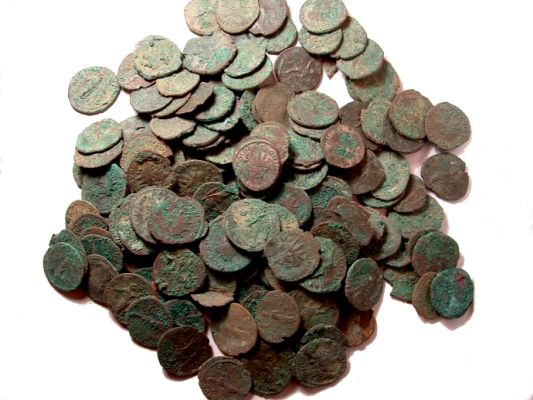That took me back some years to when I was dealing with the dating problems of Gallic Empire coin hoards. Many seem to terminate in 274, the date of the last official coins of Tetricus I and II, however, many such hoards a probably buried after that date, but they just don’t contain the coins of the official rulers post Gallic Empire.

Uncleaned Victorinus coins from the Wherstead hoard
By way of an example I cleaned and recorded a coin hoard from Wherstead in Suffolk about five years ago. The find contained 1,026 coins, mainly of the Gallic rulers Victorinus and the Tetrici (plus local imitations) but also a fair number of coins of Gallienus and Claudius II. There was only a single coin of Probus, an example from the Lyon mint, that was able to push the date of the hoard to at least 279 using Bastien’s dating. In more than 1,000 coins the earliest date of the deposit of the last coin rested on a single specimen. But for that coin this hoard would be another “274” deposit. The theory used to be that the coins of the emperors Aurelian through to Diocletian's reform did not reach northern France and Britain, a situation that may not have actually been the case given the large, unpublished, Gloucester hoard from the 1950's that contained many such coins.
This is by no means an isolated example of this phenomenon when you go through the Coin Hoards of Roman Britain volumes and what it stresses is that whilst it is important to be able to correctly identify a coin or group of coins to gain any real understanding of the find you have to know something about how they circulated and how they were hoarded.
Mauseus